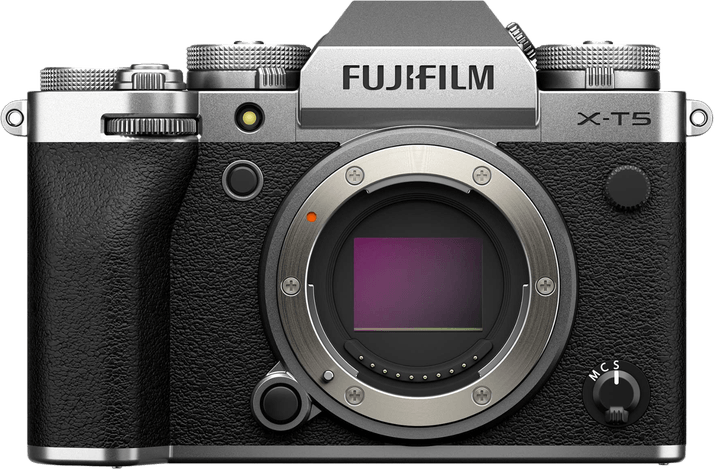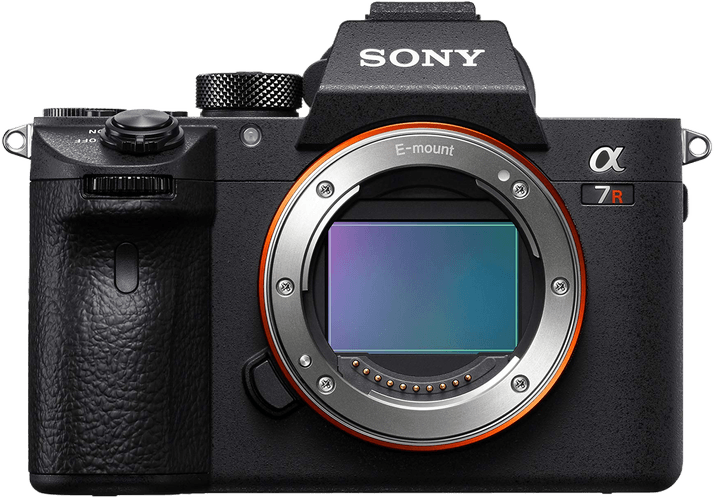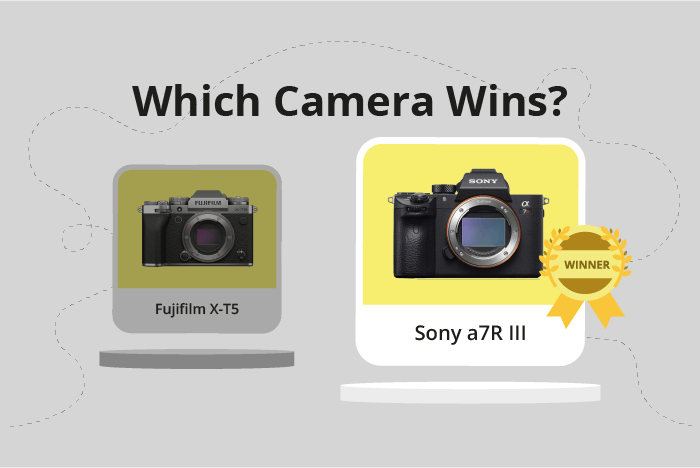Fujifilm X-T5 vs Sony a7R III Comparison
Fujifilm X-T5

Sony a7R III

The Sony a7R III outperforms the Fujifilm X-T5 with a score of 83/100 compared to 81/100. Both cameras are mirrorless and share similar dimensions, with the X-T5 measuring 130 x 91 x 64mm and the a7R III at 127 x 96 x 74mm. The X-T5 has the advantage of being lighter at 557g, while the a7R III weighs 657g.
The Fujifilm X-T5, released in 2022, is more recent and has a lower launch price of $1699, making it more budget-friendly. On the other hand, the Sony a7R III, released in 2017, has a higher launch price of $3200. Despite its higher price, the a7R III’s superior score shows that it offers better performance and features.
Considering the specifications, the Sony a7R III is the winner for its performance, while the Fujifilm X-T5 offers a more affordable option with a lighter build.
Fujifilm X-T5 vs Sony a7R III Overview and Optics
The Sony a7R III outperforms the Fujifilm X-T5 in optics with a score of 84/100 compared to the X-T5’s 81/100. Both cameras share several specifications, such as having a CMOS sensor, image stabilisation, and a similar megapixel count (42.4 for the Sony a7R III and 40 for the Fujifilm X-T5). However, there are key differences that contribute to the Sony a7R III’s higher score.
The Sony a7R III’s advantage lies in its sensor size and DXOMARK score. The a7R III has a full-frame sensor, while the X-T5 has an APS-C sensor. This larger sensor allows the Sony a7R III to capture more light, resulting in better image quality. Additionally, the a7R III’s sensor received a DXOMARK score of 100, which is an impressive achievement. Unfortunately, DXOMARK does not score Fujifilm cameras, so no direct comparison can be made.
On the other hand, the Fujifilm X-T5 has a faster shooting speed of 15 frames per second, compared to the Sony a7R III’s 10 frames per second. This makes the X-T5 more suitable for capturing fast-moving subjects, such as sports or wildlife photography. The X-T5 also has the X-Processor 5, while the a7R III uses the Bionz X processor. Both processors are capable, but the X-Processor 5 offers faster processing and better noise reduction.
Considering the optics, the Sony a7R III is the better choice for photographers seeking superior image quality due to its full-frame sensor and high DXOMARK score. The Fujifilm X-T5, with its faster shooting speed, may be the preferred option for those prioritising action photography. Both cameras have their strengths, and the choice ultimately depends on the individual’s photographic needs and preferences.
Fujifilm X-T5 vs Sony a7R III Video Performance
The Fujifilm X-T5 outperforms the Sony a7R III in video capabilities, scoring 87/100 compared to the Sony’s score of 56/100. Both cameras have similarities in their video specifications, but the Fujifilm X-T5 excels in specific aspects.
Common features between the two cameras include their ability to record high-quality video. However, the Fujifilm X-T5 surpasses the Sony a7R III with a maximum video resolution of 6K (6240×4160), while the Sony a7R III only offers 4K resolution (3840×2160). Additionally, the Fujifilm X-T5 has a higher maximum video frame rate of 60fps, compared to the Sony a7R III’s 30fps, allowing for smoother and more detailed footage.
Another advantage of the Fujifilm X-T5 is its built-in time-lapse functionality, which the Sony a7R III lacks. This feature enables users to create stunning time-lapse videos without requiring additional equipment or software.
Although the Sony a7R III falls short in comparison to the Fujifilm X-T5, it still delivers solid video performance with its 4K resolution and 30fps frame rate. These specifications are suitable for most users and provide quality video output.
Considering the differences in video capabilities, the Fujifilm X-T5 is the superior choice for those seeking higher video resolution, smoother frame rates, and built-in time-lapse functionality. The Sony a7R III, while not as advanced in video features, remains a viable option for users who do not require the additional capabilities offered by the Fujifilm X-T5.
Fujifilm X-T5 vs Sony a7R III Features and Benefits
The Fujifilm X-T5 wins the comparison with a feature score of 85 out of 100, while the Sony a7R III scores 83 out of 100. Both cameras share several specifications, including a 3-inch screen, touchscreen functionality, flip screen, GPS absence, WIFI, and Bluetooth capabilities.
The Fujifilm X-T5 outperforms the Sony a7R III in screen resolution, offering 1,840,000 dots compared to Sony’s 1,440,000 dots. This higher resolution provides a clearer and more detailed display for the user, allowing for better image composition and review.
On the other hand, the Sony a7R III also has its advantages, though they do not contribute to a higher feature score. These advantages may include aspects such as sensor size, image quality, or autofocus performance. It is essential to consider these factors when choosing between the two cameras, as they may be more relevant to specific photographic needs.
Both cameras excel in various aspects, with the Fujifilm X-T5 leading in features. However, the Sony a7R III may still be a strong contender for photographers with different priorities. It is crucial to weigh each camera’s strengths and weaknesses before making a decision, as individual needs will ultimately determine the best choice.
Fujifilm X-T5 vs Sony a7R III Storage and Battery
The Fujifilm X-T5 outperforms the Sony a7R III in storage and battery, scoring 76/100 compared to Sony’s 65/100. Both cameras share similarities, such as having two memory card slots and accepting SD, SDHC, and SDXC cards. However, the X-T5 uses UHS-I compatible cards, while the a7R III is compatible with the faster UHS-II cards.
The X-T5’s advantage lies in its USB charging capability, allowing for convenient charging options. In contrast, the Sony a7R III does not support USB charging. Nevertheless, the a7R III offers a longer battery life of 650 shots, compared to the X-T5’s 580 shots, using the NP-FZ100 battery.
While the Fujifilm X-T5 comes out on top in this comparison, both cameras exhibit strong storage and battery capabilities. The X-T5’s USB charging feature makes it more versatile, while the a7R III’s longer battery life and faster memory card compatibility may appeal to some users. Ultimately, the choice between these two cameras will depend on individual preferences and specific needs.
Fujifilm X-T5 vs Sony a7R III – Our Verdict
Are you still undecided about which camera is right for you? Have a look at these popular comparisons that feature the Fujifilm X-T5 or the Sony a7R III:

